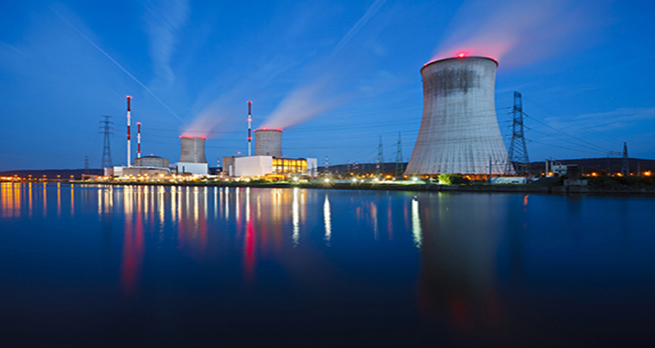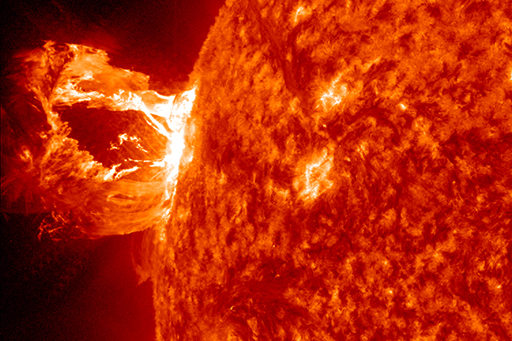4.2.1 The Sun’s energy source
The origin of most of the energy sources on the Earth is the energy we receive from the Sun in the form of electromagnetic radiation.
The Sun produces the whole of the electromagnetic spectrum (look back at Carbon emissions and global warming). The Sun’s power output is 3.846×1026 W – this means it produces about 400 million billion billion joules of energy every second! It is clearly of interest to determine the Sun’s own energy source.
The Sun is (as all stars are) composed mainly of hydrogen. The Sun is by far the largest object in the Solar System – it contains 99% of the mass of the entire Solar System. The large mass means that there are very large gravitational forces that pull the Sun together and create extremely high temperatures and pressures at the centre. These conditions allow nuclear fusion to occur.
Fusion involves combining, or ‘fusing’, two small nuclei into one larger one. It is the opposite of fission which, as you learned in Week 1, involves splitting large nuclei into two smaller ones. Like nuclear fission, fusion is a nuclear process because fusion reactions involve changes in the number of protons and neutrons within nuclei. These changes within the nucleus itself define nuclear reactions as opposed to chemical reactions. In both cases energy is released, considerably more in the case of fusion.
You will examine a bit more of the physics behind fusion in the next section, however all that you need to know is that the process of fusion produces a huge amount of energy.

